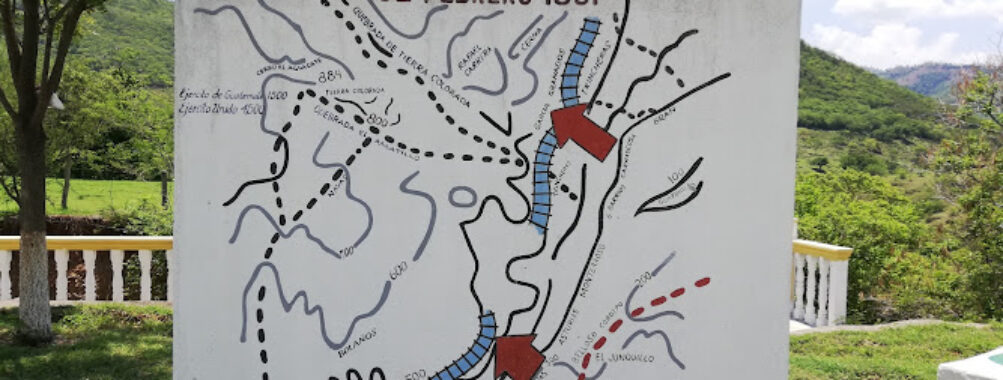
Panteón de la Arada
Table of Contents
Description
If you ever find yourself rambling through the rugged landscapes of Chiquimula, Guatemala, and you’re in the mood to get a little closer to history—not just skim the surface, you might want to wander over to the Panteón de la Arada. I’ll tell you, it’s not one of those polished, shiny museums where a guide chases you around for touching things. No, this site feels a tad raw and real, which is exactly why it draws people who want more than picture-perfect postcards. There’s a gravity here. Old structures, whispery legends, and a tangible sense that you are treading where generations before you have grieved, celebrated, and remembered.
Panteón de la Arada isn’t just a history museum. It’s a local historical spot where the stories practically seep from the stones. This place is totally appropriate for families—kids don’t need to whisper or tip-toe. There’s an authenticity here that fills you up, if you’re open to it. And, despite its slightly weathered look, I promise you’ll walk away with that odd mix of melancholy and awe. Maybe you’ll even catch yourself thinking about your own family’s legacy (I sure did). Don’t expect restaurant service, so plan ahead food-wise, but the trade-off? You get to experience a real corner of Guatemalan history undiluted by tourist frills. Some folks would say you haven’t really met Chiquimula if you haven’t stood here and let the view wash over you.
Key Features
- Unique Historical Setting: Not your run-of-the-mill, manicured museum; there’s a raw, lived-in feel you can’t replicate.
- Family-Friendly Atmosphere: Kids are welcome and can roam a bit—no constant shushing required.
- Rich Storytelling: Every mossy corner, weathered engraving, and shadowy corridor hints at stories of old Guatemala, many untold elsewhere.
- Authentic Local Experience: The focus here is on the real daily-life history of the community, not just highlights from textbooks.
- Peaceful Environment: Quiet, reflective, and rarely crowded—ideal for those who want to take their time and avoid bustle.
- Photographic Opportunities: Even if you aren’t a professional, your camera (or even your phone) will soak up atmospheric shots here—think textured stone, soft light, maybe even a moody sky if you’re lucky.
- Accessible for All Ages: Whether you’re bringing toddlers, teens, or your granddad, pretty much everyone finds a window into the past here.
Best Time to Visit
Okay, personal confession: I’m not a fan of crowds (who is?), so mid-week mornings are my go-to. Panteón de la Arada can feel pretty magical in the early hours, with the soft light making the old stones look extra dramatic. Dry season—think November through April—is your friend, since nobody enjoys poking around history in soggy shoes. School holidays can mean a few extra families on the scene, but the place never really feels jam-packed. Oh, and if you’re into local customs, ask around about festivals or public holidays. Sometimes, ceremonies or small gatherings give you a front-row seat to traditions that you simply can’t buy in any travel package.
How to Get There
Let’s get practical: Public transport in Chiquimula is decent but not exactly Swiss-train punctual, so factor in a bit of spontaneity. Taxis run regularly from the city center, and drivers usually know exactly where Panteón de la Arada is—just a quick “El Panteón, por favor” and you’re sorted. A short tuk-tuk ride can be an adventure in itself (I laughed myself silly on my last one, still gripping that handlebar for dear life). If you’re more of a DIY type and renting a car, there’s usually parking within walking distance. I’d advise against flashing your GPS too much—locals are almost always more helpful than an app. They’ll even share a story or two about the museum if you ask. Expect to stroll a short way after you park, which honestly feels like part of the experience.
Tips for Visiting
If you’re like me, you probably like to go a little off-script when you travel. So here are a few tried-and-tested tips to squeeze every bit of magic out of your visit:
- Bring Water and Snacks: No on-site café, so stick a bottle in your bag and maybe a snack (you’ll thank yourself later).
- Wear Comfortable Shoes: Ground can be a bit uneven—charmingly so, but ankle-twister if you’re in sandals.
- Ask the Locals: If you spot groundskeepers or visitors, gently strike up a convo. Some of the best stories aren’t written on plaques—they’re shared in passing.
- Check For Events: Occasionally, the local community will hold commemorations or special days that transform the place. If you’re lucky enough to be there, stick around!
- Respect the Site: It’s a blend of museum and active memorial, so keep your voice low (except to sing the praises of your experience over post-visit coffee).
- Photograph Respectfully: While you’ll want pics (who wouldn’t?!), remember that some areas might be more solemn.
- Timing: Hang back for a while. Sometimes, I’ve found, the best moments come when the crowds thin and you have a chance to listen to the quiet. You’ll see or feel things the quick visitors miss.
- Bring The Kids: Don’t stress about the children running a little wild—they’re more welcome here than you think. In fact, it’s a great spot for them to start learning about the real stories behind Guatemalan history.
I’ll leave you with one last thought: Panteón de la Arada isn’t trying to impress you with grandiosity. It’s gently challenging you to feel. If you let it, this place will rest in your memory long after you leave Chiquimula. You’ll go for the history, but it’s the spirit of the place that’ll surprise you most.
Location
Places to Stay Near Panteón de la Arada
Find and Book a Tour
Explore More Travel Guides
No reviews found! Be the first to review!